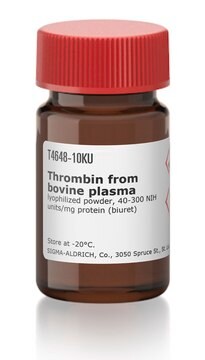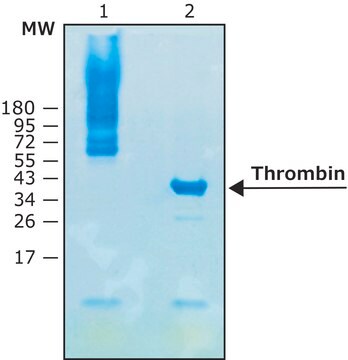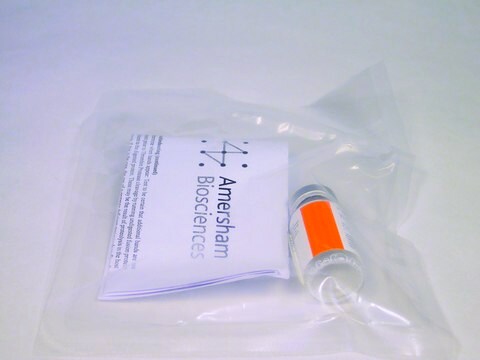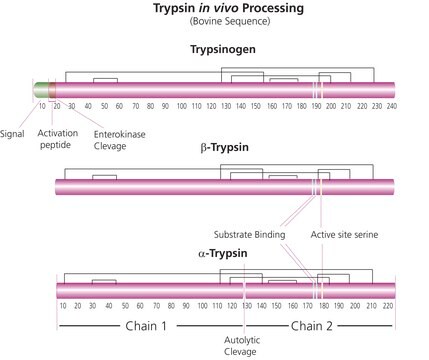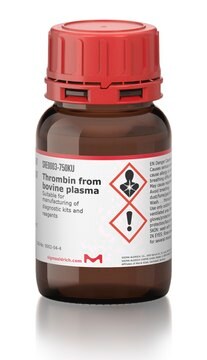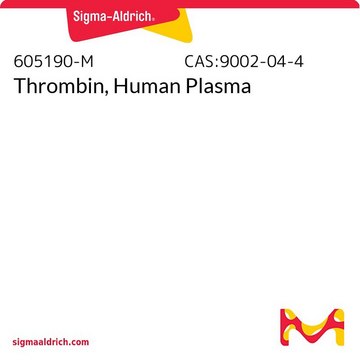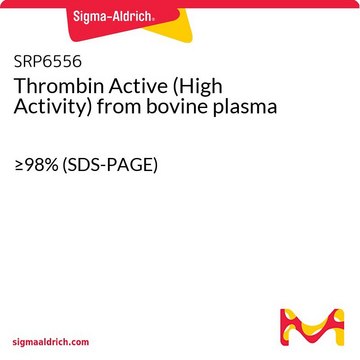Key Documents
T9326
Thrombin human
BioUltra, recombinant, expressed in HEK 293 cells, aqueous solution, ≥95% (SDS-PAGE)
Synonim(y):
Factor IIa
About This Item
Polecane produkty
rekombinowane
expressed in HEK 293 cells
Poziom jakości
linia produktu
BioUltra
Próba
≥95% (SDS-PAGE)
Postać
aqueous solution
aktywność właściwa
≥2,000 units/mg protein
masa cząsteczkowa
37.4 kDa
numer dostępu UniProt
Warunki transportu
dry ice
temp. przechowywania
−70°C
informacje o genach
human ... F2(2147)
Szukasz podobnych produktów? Odwiedź Przewodnik dotyczący porównywania produktów
Powiązane kategorie
Opis ogólny
Zastosowanie
Definicja jednostki
Postać fizyczna
Kod klasy składowania
10 - Combustible liquids
Klasa zagrożenia wodnego (WGK)
WGK 1
Temperatura zapłonu (°F)
Not applicable
Temperatura zapłonu (°C)
Not applicable
Certyfikaty analizy (CoA)
Poszukaj Certyfikaty analizy (CoA), wpisując numer partii/serii produktów. Numery serii i partii można znaleźć na etykiecie produktu po słowach „seria” lub „partia”.
Masz już ten produkt?
Dokumenty związane z niedawno zakupionymi produktami zostały zamieszczone w Bibliotece dokumentów.
Klienci oglądali również te produkty
Produkty
Thrombin Factor IIa is an endolytic serine protease that selectively cleaves the Arg--Gly bonds of fibrinogen to form fibrin and release fibrinopeptides A and B.
Czynnik trombinowy IIa jest endolityczną proteazą serynową, która selektywnie rozszczepia wiązania Arg--Gly fibrynogenu, tworząc fibrynę i uwalniając fibrynopeptydy A i B.
Nasz zespół naukowców ma doświadczenie we wszystkich obszarach badań, w tym w naukach przyrodniczych, materiałoznawstwie, syntezie chemicznej, chromatografii, analityce i wielu innych dziedzinach.
Skontaktuj się z zespołem ds. pomocy technicznej

